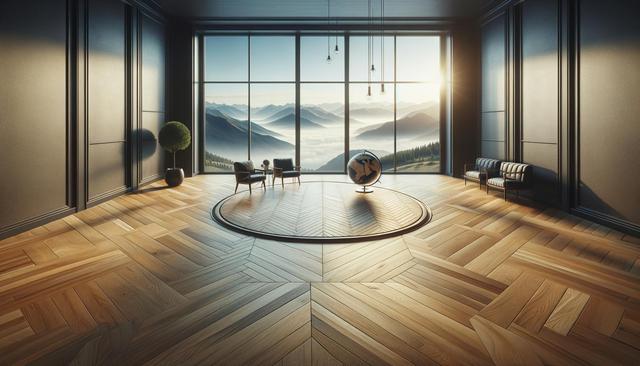The Timeless Appeal of Hardwood Floors
Few elements of interior design offer the enduring charm and value of a hardwood floor. Its natural texture, rich tones, and ability to complement almost any decor style make it a popular choice for homeowners and designers alike. Unlike trends that come and go, wood flooring maintains its status as a classic foundation for both modern and traditional interiors. The unique grain patterns and subtle variations in color add character and warmth to a room, while the ability to refinish the surface means your floor can evolve with your style over time.
Hardwood floors can seamlessly blend into various settings, whether it’s a cozy cottage or a sleek urban apartment. Their versatility is unmatched, fitting effortlessly into different themes and color palettes. Homeowners often regard them as a long-term investment that not only enhances living spaces but also contributes to property value. With proper care, hardwood floors can last for decades, making them a reliable and attractive option for any home flooring project.
Choosing the Right Wood Flooring for Your Space
Selecting the right type of wood flooring involves considering several factors, including wood species, plank width, finish, and color tone. Each type of wood brings its own characteristics in terms of hardness, grain pattern, and hue. For instance, oak offers excellent durability and a well-defined grain, while maple provides a smoother texture and lighter appearance. Exotic woods, although often more expensive, can deliver unique aesthetics not found in domestic species.
Key considerations when choosing hardwood flooring include:
- Room usage: High-traffic areas may benefit from harder wood species.
- Lighting: Natural and artificial lighting can affect how the floor color appears.
- Design goals: The choice of wood should align with your overall interior design concept.
- Maintenance needs: Some finishes are more resistant to scratches and stains than others.
Consulting with a flooring specialist can help clarify which options are most suited to your space and lifestyle. They can guide you through the selection process to ensure your hardwood floor meets both functional needs and aesthetic preferences.
The Installation Process: What to Expect
Floor installation is a critical step that determines the longevity and appearance of your hardwood flooring. Whether you opt for a professional installer or a DIY approach, understanding the process will help set expectations and ensure a smooth transformation. Installation methods vary depending on the type of hardwood used—solid wood often requires nail-down installation, while engineered wood can be installed using a click-lock or glue-down method.
The installation process typically includes:
- Acclimating the wood to the home’s environment
- Preparing the subfloor by cleaning and leveling
- Installing underlayment for moisture protection and sound absorption
- Laying the wood planks in a chosen pattern
- Finishing touches such as trim and transitions
Proper installation not only enhances the appearance of your wood flooring but also prevents issues such as warping or gapping. Choosing experienced professionals for floor installation can make a significant difference in outcome and long-term satisfaction.
Maintaining Your Hardwood Floor
One of the key advantages of hardwood flooring is its ease of maintenance. With regular care, your floors can retain their beauty and functionality for many years. Basic upkeep includes sweeping or vacuuming to remove dust and debris, as well as periodic mopping with a wood-safe cleaner. It’s important to avoid excessive water, which can damage the wood over time.
To preserve the condition of your hardwood floor:
- Use rugs or mats in high-traffic areas and entryways
- Install furniture pads to prevent scratching
- Maintain consistent humidity levels in the home
- Refinish the surface periodically to address wear and restore luster
By following these guidelines, homeowners can extend the life of their wood flooring and keep it looking its best. Maintenance also contributes to the overall interior design appeal, ensuring that your home flooring remains a focal point in your living space.
Enhancing Interior Design with Hardwood Flooring
Hardwood flooring plays a central role in shaping the atmosphere of a room. It acts as a neutral yet visually rich backdrop for furnishings, artwork, and architectural details. Whether you prefer a rustic farmhouse look or a contemporary minimalist style, wood flooring adapts to your vision and elevates the overall design.
Designers often use hardwood floors to:
- Anchor open-concept living spaces with cohesive visual flow
- Add texture and warmth to modern interiors
- Create contrast with light-colored walls and furnishings
- Highlight natural materials in eco-friendly designs
The variety of finishes available—from matte to glossy—allows for further customization to suit your preferences. Additionally, the ability to change wall colors or decor without replacing the floor makes hardwood a flexible and enduring design element. When thoughtfully integrated, a hardwood floor enhances both the form and function of your home environment.
Conclusion: A Lasting Investment in Style and Comfort
Choosing hardwood flooring is more than a design decision—it’s an investment in quality, comfort, and long-term value. With its timeless appeal, easy maintenance, and adaptability to various interior styles, a hardwood floor can transform any space into a welcoming and refined environment. Whether you’re updating a single room or undertaking a full home renovation, wood flooring offers a practical and visually appealing solution that stands the test of time. For homeowners seeking a balance of elegance and resilience, hardwood remains a well-regarded choice in home flooring.




Leave a Reply